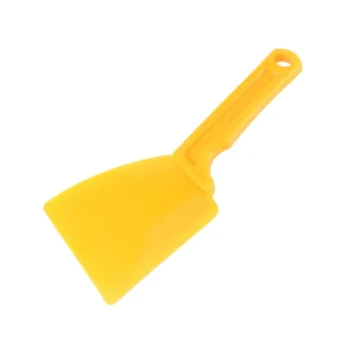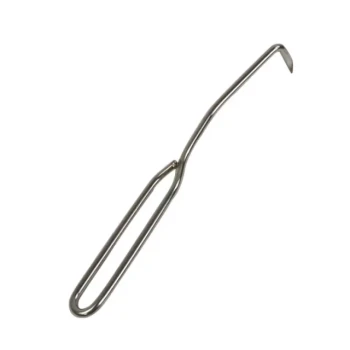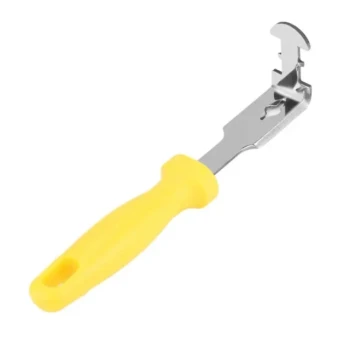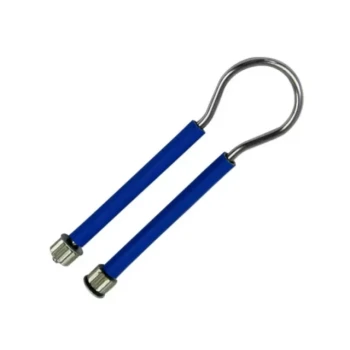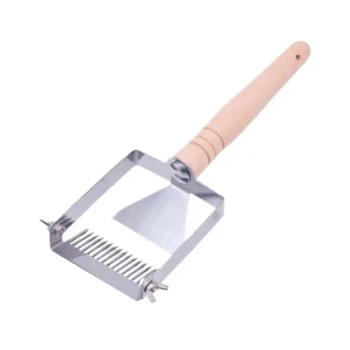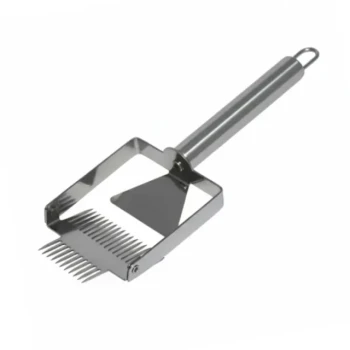In short, covering a bee hole is a critical mistake that traps the colony inside your walls and often makes the problem much worse. Instead of dying off, the thousands of trapped bees will frantically search for a new exit. Their most likely escape route is through your home's interior, chewing through drywall and plaster to emerge into your living space.
The fundamental error is treating the hole as the problem when it is merely the symptom. Sealing the entrance traps a large, panicked colony inside your walls, forcing it to find a new exit and leaving behind a hive structure that will rot, cause damage, and attract other pests.

The Immediate Consequences of Sealing the Hole
Plugging an active bee entrance sets off a chain reaction that typically unfolds over the next 24 to 48 hours. Understanding the bees' behavior is key to understanding why this approach fails.
Trapping the Colony
A visible stream of bees indicates a well-established colony inside the wall void, which can contain anywhere from 10,000 to 50,000 individual bees. Sealing their only known exit traps this entire population.
The Frantic Search for a New Exit
Trapped bees will not simply die. Driven by survival instincts, they will immediately begin searching for any new way out. They are drawn to light and air currents, which they can often sense from interior vents, light fixtures, and gaps around window frames.
The colony will begin to actively chew through softer building materials, most commonly drywall or plasterboard, to escape the wall void. This is how a minor external problem suddenly becomes a major internal infestation.
Increased Aggression and Risk
A trapped, stressed colony is more defensive and unpredictable. Bees emerging inside your home are disoriented and agitated, significantly increasing the risk of stings for you, your family, and your pets.
The Long-Term Problems You Create
Even if the bees don't manage to get inside your home and eventually perish, sealing the hive inside the wall creates new, more insidious problems.
The Abandoned Hive
A mature honey bee colony leaves behind a significant structure of wax honeycomb. This comb is filled with honey, pollen, and developing bee larvae (brood). This entire biological mass is now left to decay inside your wall.
Secondary Pest Infestations
The rotting honey and brood produce a strong odor that attracts a host of other pests. Your home can quickly develop secondary infestations of ants, cockroaches, carpet beetles, and wax moths, which come to feed on the abandoned hive.
Structural and Odor Damage
Fermenting honey can seep through drywall and damage wooden structures over time, leading to dark, sticky stains. The smell of the decaying hive and dead bees can permeate the home and be extremely difficult to eliminate, sometimes requiring the removal of entire sections of the wall.
Understanding the Trade-offs: Why Sealing Fails
The impulse to seal a hole is logical from a human perspective but fails to account for the reality of a bee colony.
The "Out of Sight, Out of Mind" Fallacy
Plugging the entrance provides a false sense of security. It hides the problem from view but does not solve it. The biological engine of the colony is still running, and you have simply redirected its activity from outside to inside.
Ignoring the Scale of the Problem
A few bees at a hole are the sign of a massive, hidden structure. The true problem is the hive itself, not the doorway the bees use. Any effective solution must involve the removal of the entire colony and its comb.
The Correct Approach: From Sealing to Solving
The goal is not to block the bees, but to remove the entire colony and its hive structure safely. This ensures the problem is solved permanently without creating secondary issues.
- If you have an active colony: Your primary goal is safe removal. Contact a professional beekeeper or a pest control company that specializes in live bee removal to extract the colony and the comb.
- After the colony is removed: Your focus is on cleanup and prevention. Ensure the professional removes all the wax comb and honey from the void to prevent future pest infestations and odor problems.
- Once the void is clear and clean: This is the correct time to solve the structural issue. Properly seal the original entry point and any other potential gaps in your home's exterior to prevent new colonies from moving in.
By addressing the root cause—the colony itself—you ensure a permanent and safe solution for both your home and the bees.
Summary Table:
| Consequence | Timeline | Key Risk |
|---|---|---|
| Bees Chew Through Walls | 24-48 hours | Bees enter living spaces through drywall. |
| Increased Aggression | Immediate | Trapped, stressed bees pose a higher sting risk. |
| Hive Decay & Pest Infestation | Weeks/Months | Rotting comb attracts ants, roaches, and beetles. |
| Structural Damage & Odors | Long-term | Fermenting honey seeps through and stains walls. |
Don't let a trapped bee colony damage your property. For commercial apiaries and beekeeping equipment distributors, a bee infestation in structures is a serious operational hazard. HONESTBEE provides the professional-grade equipment and expert knowledge needed for safe, effective hive management and prevention. Contact our specialists today via our Contact Form to discuss wholesale solutions for protecting your assets and ensuring bee-related issues are handled correctly.
Visual Guide
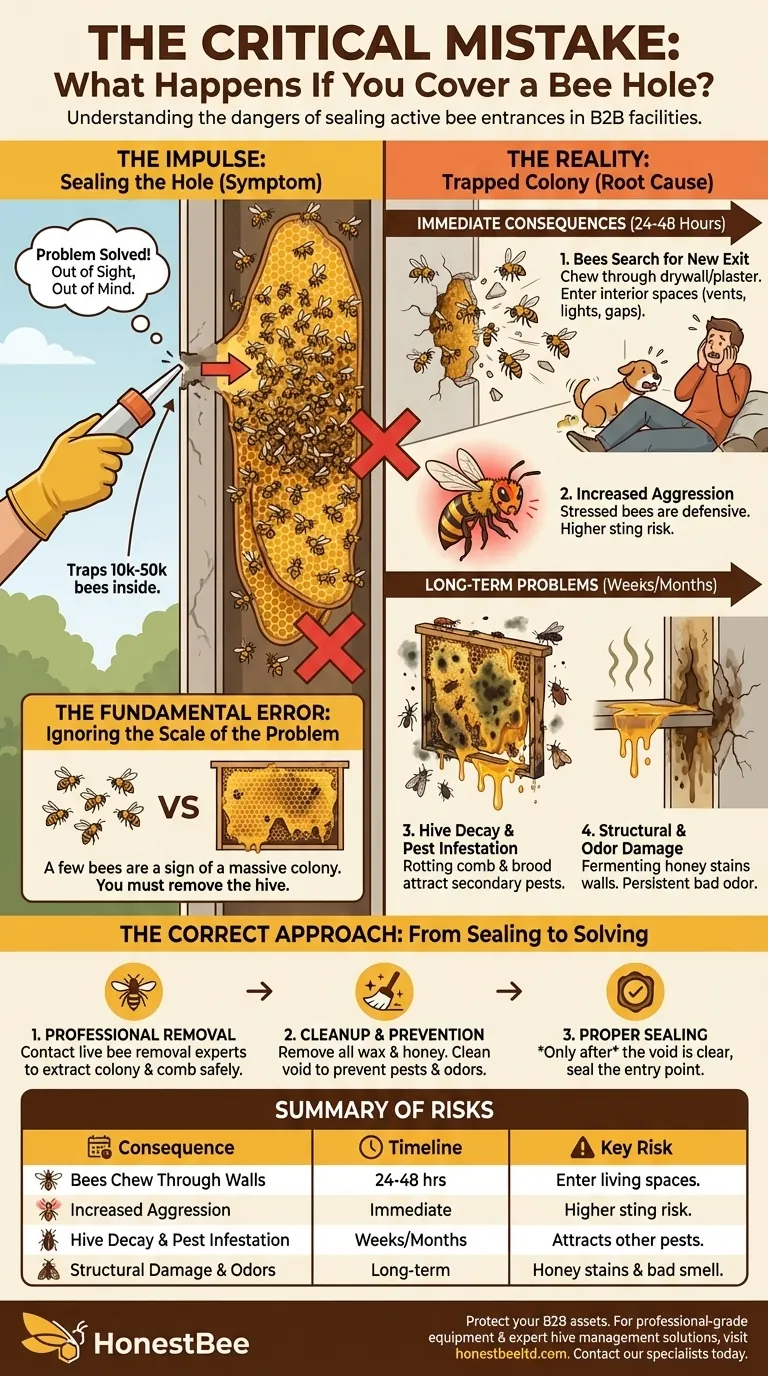
Related Products
- HONESTBEE Professional Long Handled Hive Tool with Precision Cutting Blade
- Wholesales Dadant Size Wooden Bee Hives for Beekeeping
- Professional Insulated Plastic Bee Hives
- Professional Insulated Winter Hive Wrap for Beekeeping
- Honey Flow Garden Bee Hive Flow Hive Best Beehive for Beginners
People Also Ask
- What are the features of a regular hive tool? The Essential Multi-Tool for Every Beekeeper
- Why do hive tools have a hole? Unlock the Secret to Efficient Beekeeping
- What is a hive tool and what are its uses? Master Your Hive Inspections with the Essential Beekeeper's Tool
- What are the basic tools for beekeeping? Essential Starter Kit for Safe & Successful Hive Management
- How should beekeepers handle bees when using a hive tool? Master Calm, Deliberate Techniques





